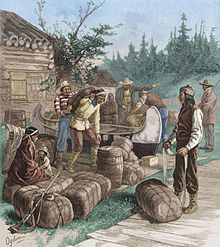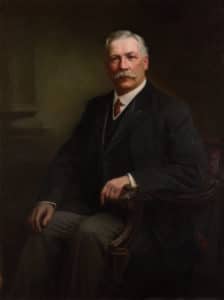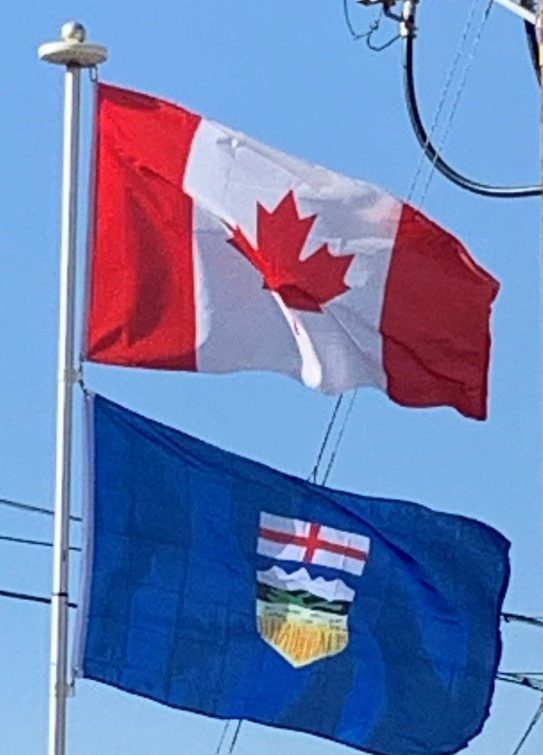
The Athabasca River and the rivers north of it were not in HBC territory because they drained into the Arctic Ocean instead of Hudson Bay, and they were prime habitat for fur-bearing animals. The first explorer of the Athabasca region was Peter Pond, who learned of the Methye Portage, which allowed travel from southern rivers into the rivers north of Rupert’s Land. Fur traders formed the North West Company (NWC) of Montreal to compete with the HBC in 1779. The NWC occupied the northern part of Alberta territory. Peter Pond built Fort Athabasca on Lac la Biche in 1778. Roderick Mackenzie built Fort Chipewyan on Lake Athabasca ten years later in 1788. His cousin, Sir Alexander Mackenzie, followed the North Saskatchewan River to its northernmost point near Edmonton, then setting northward on foot, trekked to the Athabasca River, which he followed to Lake Athabasca. It was there he discovered the mighty outflow river which bears his name—the Mackenzie River—which he followed to its outlet in the Arctic Ocean. Returning to Lake Athabasca, he followed the Peace River upstream, eventually reaching the Pacific Ocean, and so he became the first European to cross the North American continent north of Mexico.
The extreme southernmost portion of Alberta was part of the French (and Spanish) territory of Louisiana, sold to the United States in 1803; in 1818, the portion of Louisiana north of the Forty-Ninth Parallel was ceded to Great Britain.
Fur trade expanded in the north, but bloody battles occurred between the rival HBC and NWC, and in 1821 the British government forced them to merge to stop the hostilities. The amalgamated Hudson’s Bay Company dominated trade in Alberta until 1870, when the newly formed Canadian Government purchased Rupert’s Land. Northern Alberta was included in the North-Western Territory until 1870, when it and Rupert’s land became Canada’s Northwest Territories.
The District of Alberta was created as part of the North-West Territories in 1882. As settlement increased, local representatives to the North-West Legislative Assembly were added. After a long campaign for autonomy, in 1905 the District of Alberta was enlarged and given provincial status, with the election of Alexander Cameron Rutherford as the first premier. Less than a decade later, the First World War presented special challenges to the new province as an extraordinary number of volunteers left relatively few workers to maintain services and production. Over 50% of Alberta’s doctors volunteered for service overseas.

On June 21, 2013, during the 2013 Alberta floods Alberta experienced heavy rainfall that triggered catastrophic flooding throughout much of the southern half of the province along the Bow, Elbow, Highwood and Oldman rivers and tributaries. A dozen municipalities in Southern Alberta declared local states of emergency on June 21 as water levels rose and numerous communities were placed under evacuation orders.
In 2016, a wildfire resulted in the largest evacuation of residents in Alberta’s history, as more than 80,000 people were ordered to evacuate.
